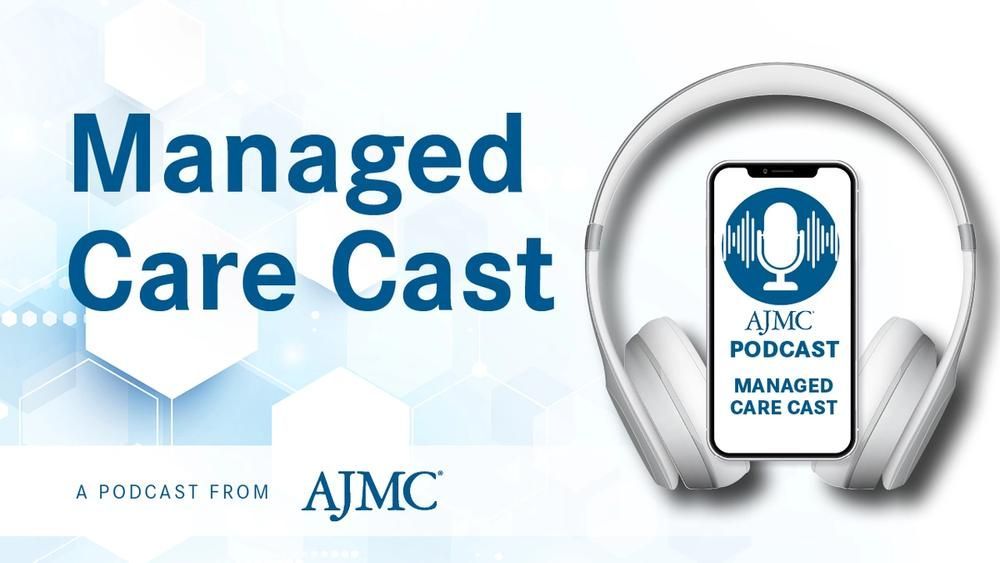News
Article
Enhancing Quality in Virtual Care Delivery
Author(s):
Key Takeaways
- Virtual care optimization requires standardization, technology integration, and provider support to enhance access and quality.
- Dignity Health's pilot program improved care management for new members through virtual care teams, reducing PCP burden.
Strategies to enhance virtual care through quality assurance frameworks, technological innovation, and provider support were laid out in a pair of posters presented at the recent AMGA Annual Conference.
Five themes were common across a pair of posters presented at the recent AMGA Annual Conference that examined optimizing virtual care delivery: to ensure quality and safety, virtual care should be standardized; technology and care delivery systems should be integrated; provider capabilities should be enhanced through improvement initiatives; patient engagement and/or attribution should be regularly addressed with feedback; and stakeholders should be involved through framework development and operational expansion.1,2
Together, these studies explored strategies to boost virtual care through quality assurance frameworks, technology integration, and provider support, emphasizing standardization, operational efficiency, and patient engagement to improve care delivery and access.
Leveraging Virtual Care Teams1
“Much like many other groups, we have challenges with access, with new patients getting in, with trying to get our quality measures met, [and]t with patients unfortunately going to the emergency department when they could go to urgent care or be seen in the primary care office,” explained Scott Needle, MD, chief medical offer at Woodland Clinic/CommonSpirit, who presented findings on expanding access through virtual care in a value-based health economy.
Scott Needle, MD (left) and Imad Jobah, MHA | Image Credit: © Maggie L. Shaw

Proactively focusing on a capitated population—for whom medical providers are given a set fee per patient, regardless of treatment required—Dignity Health, part of the CommonSpirit nationwide nonprofit health care system serving approximately 1 in 4 Californians,3 introduced Dignity Health Virtual to help support new managed care members through telehealth. The pilot program has so far been rolled out in Sacramento, Woodland, and Santa Cruz to members who are new, unseen, and have Medicare Advantage coverage.
Through the program and using new member rosters, a virtualist team comprising a member advocate, registered nurse, and advanced practice provider attempt outreach to each member through a welcome phone call, text message, or email. These new members are welcomed to the group and instructed on how they can access care. If any immediate medical needs are uncovered (eg, labs, tests, eFill of prescriptions, etc.), the member is then walked through a triage process to further stratify their medical need.
To smooth the transition of care from the virtual to an in-person setting, an in-person new patient visit is scheduled as needed, with the virtualist care provider updating the patient’s Cerner chart, or electronic medical record, to be ready for the appointment with the primary care provider (PCP). Benefits of this virtual workflow include the provision of on-demand resources, care management navigation, patient portal and app support, a stronger focus on the relationship with the care provider, medical records support through chart prep, medication management support, reduced burnout on the part of the PCP and their medical assistance, and appointment-level loading.
Of the 8000-plus new members for whom outreach has so far been conducted, a connection has been made with 600-plus patients (100% of whom got set up with their patient portal), and 400-plus members are now supported through nurse triage, standing orders and care gap closures, medication management and refills, specialty referrals, and PCP assignment navigation. Of this final group, 30% did not need a PCP appointment, 67% scheduled a nonurgent appointment, and 3% took the first available slot.
“The patients are getting the care at the level they need. If they need to be seen immediately, we get them in; if they're okay to wait, that's fine,” Needle explained. “They're in the system, so you've taken the burden off of the PCP [and] off of the PCP’s medical assistant. They now don't have to go through all of that tremendous intake.”
Benchmarking Virtual Care Quality2
“Thirty Madison is an asynchronous virtual care platform, serving approximately 1 million patients,” noted Trusha Patel, MD, MPH, medical director of quality, safety, and process improvement, Thirty Madison and KMG Medical Group, a virtual specialty care provider.4 “Given the asynchronous nature of our care model, we recognized the need to implement an additional layer of rigor to ensure the highest quality of care delivered by our providers.”
Trusha Patel, MD, MPH | Image Credit: © Thirty Madison

Patel and her team created a comprehensive toolkit and chart review rubric, or quality assurance framework, to enhance both the quality and safety of virtual care delivery that contained strategies for assessing clinical quality, provider improvement, and feedback. They wanted to emphasize collaboration and stakeholder input and sought to fill a gap they saw in standardized quality assurance.
The criteria within their rubric reflects 3 of the quality pillars from the Institute of Medicine—safety, quality, and patient-centeredness—and they also evaluate timeliness, equity, and efficiency through separate metrics. Through workshops, feedback was gathered on the utilization challenges of each service line, variations inherent in assessments, and cases of perception bias. The rubric was also consistently evaluated for its applicability and alignment. Shifting the care culture encompassed implementation of a targeted quality assurance toolkit that had 3 goals for provider performance: reinforce positive provider behavior, offer guidance for improvement, and enable goal setting.
On an ongoing basis, quarterly chart reviews are carried out. These results and feedback are used to optimize the rubric “to ensure criteria consistently reflect best practice care,” Patel and her coauthors explained.
Their results so far are promising from among the 215 patient satisfaction surveys and 480 chart reviews that have been conducted. Focusing on migraine care for the moment, there was a close positive correlation between scores for patient satisfaction by provider and migraine care providers’ chart review results. The average scores were 94.80% and 95.25%, respectively. In addition, 80% of reviewers said the newest rubric was superior to the previous rubric at measuring provider performance via quality and safety, and 90% said updates were not needed at this time.
“It was encouraging to find that when we deliver optimal care, it is perceived and valued as such by our patients,” Patel explained.
Overall, the findings of Patel and her team show that a structured approach to improving clinical care quality can be implemented effectively and that personalizing their rubric and quality improvement toolkit to each service line can strengthen virtual care delivery, “emphasizing the critical link between quality assurance and patient-centeredness.”
References
1. Needle S, Jobah I. Leveraging virtual care teams to expand access in value-based care. Presented at: AMGA Annual Conference; March 26-29, 2025; Grapevine, TX. Poster 38.
2. Patel T, Chmielewski S, Holdershaw M, Elliott-Thul B, Miranda K, Parikh N. Designing a program for virtual care quality and patient safety. Presented at: AMGA Annual Conference; March 26-29, 2025; Grapevine, TX. Poster 34.
3. Dignity Health in California. Dignity Health. Accessed March 31, 2025. https://www.dignityhealth.org/california
4. Thirty Madison. Accessed March 31, 2025. https://thirtymadison.com/





